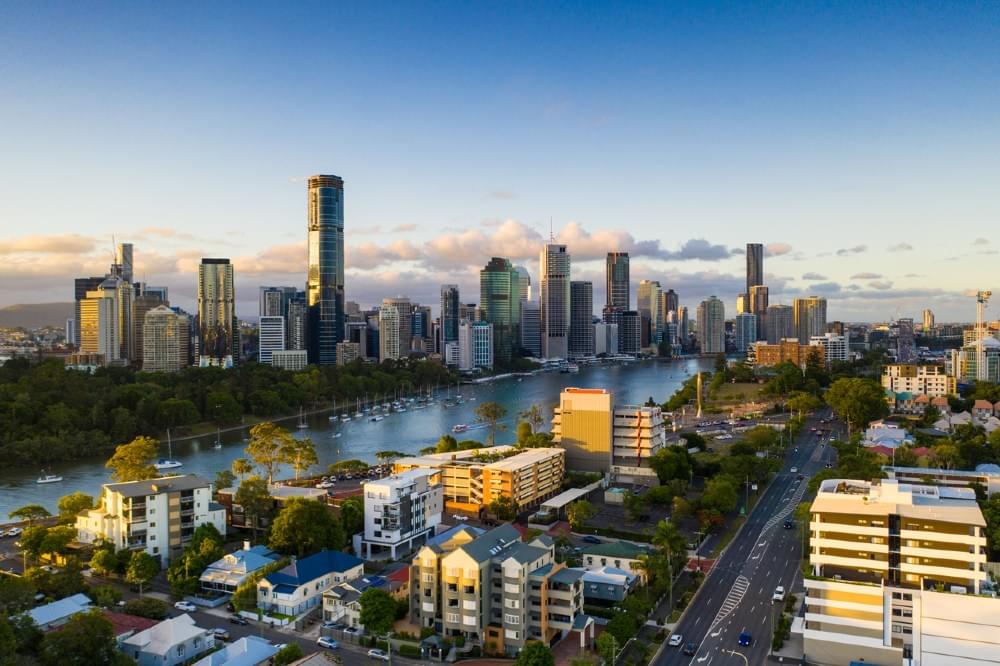Brisbane and QLD property market update - March 2020
It’s undeniable that Covid-19 has wreaked havoc on the Australian property market, with social distancing measures and bans on open homes and on-site auctions impacting the way buyers, sellers and agents navigate the market. In light of these restrictions, the real estate industry has been quick to adapt, by introducing private inspections, digital auctions and 3D online walkthroughs.
According to CoreLogic's latest Home Value Index, we've seen decent growth across both Brisbane and regional Queensland. These numbers are not entirely representative of how the market is right now, given that Covid's sudden arrival resulted in a market turn in mid-March. However, given the circumstances, what we are seeing is that properties are still continuing to come onto the market and they’re continuing to sell.
How has the Queensland and Brisbane property market been tracking?

Brisbane property prices
Houses
$557,714
Monthly change: +0.7%
Units
$386,427
Monthly change: +1.1%
Regional Queensland property prices
Houses
$388,812
Monthly change: +0.9%
Units
$359,019
Monthly change: +0.6%
In March, property values in Brisbane increased by 0.6%, which marks eight consecutive months of improvement. This took the median dwelling value up to $503,256. Over the March quarter, we saw values rise by 1.6%, and 3.1% annually.
According to CoreLogic, none of the city's sub-regions made the top ten for the highest annual change in dwelling values, but, the data shows that quite a few non-capital city regions performed well over the last year.
Some regional standouts were the Mackay-Whitsunday region, which saw annual growth of +6.3%, the Sunshine Coast at +5.1% and the Gold Coast posting an annual increase of +4.8%.
But then Coronavirus came along… because of this, it’s important to take these figures with a grain of salt. Covid-19 didn’t really take a hold on the market until mid-March, where CoreLogic noted a significant slow down, so the figures for the entire month are not a true representation for where the market is currently at.
When it comes to auction clearance rates, these figures should be examined more closely too. Figures in Brisbane are currently hovering around 42%, however, with Covid-19’s hold on the market, this number is quite meaningless, given the public ban on auctions which is pushing agents to sell properties via private treaty instead.
If numbers continue to trend downwards, we could see a larger pool of discretionary buyers and sellers holding off until they feel the economy is in a good place. Sellers who must sell will enter the market, and buyers with finance approval and secure jobs will still be on the hunt for a new property.
Brisbane and Queensland rental market update
In Brisbane, CoreLogic reported an annual change in rents of +1.5% with rental yields sitting at +4.4% in March, while in regional Queensland the rental yield was 5.3%.
Up until now, rental pressures have remained quite modest across most areas of Australia, with the past twelve months seeing rental rates rise by only 1.4%, which is below the state of inflation.
Property managers are urging landlords to slash weekly rents or consider offering shorter lease periods in an attempt to secure tenants.
However, pressure on the rental market is expected to intensify, with growing unemployment rates, weaker labour market conditions and less demand from students for accommodation. As renters struggle with maintaining or securing employment, landlords are inevitably going to face tougher times through a loss of rental income.
And with shutters falling on the tourism industry, for both international and domestic travellers, we can expect short-term holiday rentals to also enter the rental market in areas dependent on tourism.
According to figures released by property listing portal Domain, in comparison to this time last year, there are 55% more rental listings in Cairns, 38% more in the Whitsundays and 14% more in Hervey Bay.
Additionally, there are around 300 more rentals on the Gold Coast, 250 more on the Sunshine Coast and around 120 more in Brisbane’s inner-south.
This is creating a competitive rental market where property managers are urging landlords to slash weekly rents or consider offering shorter lease periods in an attempt to secure tenants as quickly as possible.
Read: A guide to selling a property during Covid-19
How will Covid-19 affect the Brisbane and Queensland property markets and what should we expect for the months ahead?
Unfortunately, the only thing that’s certain at this time is uncertainty. With conditions changing day by day, and with such a sudden impact on the market, it’s simply too early to predict what’s going to happen in the long term.
CoreLogic themselves have noted that if transaction volumes were to continue to drop, it would affect their ability to conduct timely analysis of market conditions.
"The longer it takes to contain the virus and bring economic operations back to normal, the higher the downside risk to housing values."
According to CoreLogic’s Chief Economist Tim Lawless, “The housing market won’t be immune to a drop in sentiment and weaker economy, however the extent of the impact on dwelling values remains highly uncertain.”
“Capital growth trends will be contingent on how long it takes to contain the virus, and whether additional constraints on business or personal activity are introduced,” Mr Lawless said.
The bottom line is: prices will go down. As changes in employment opportunity and income growth take a tumble, so too will property values. The extent to which these are affected is going to depend on the length of the outbreak and the fiscal measures put in place by the government to protect businesses and keep Australians in jobs.
While property transactions will slow, Mr Lawless expects that housing values will be more insulated throughout this crisis.
“Although Australia’s housing markets have begun to enter a period of disruption, they are coming from strong foundations,” Mr Lawless said.
"Arguably, the longer it takes to contain the virus and bring economic operations back to normal, the higher the downside risk to housing values," he said.








